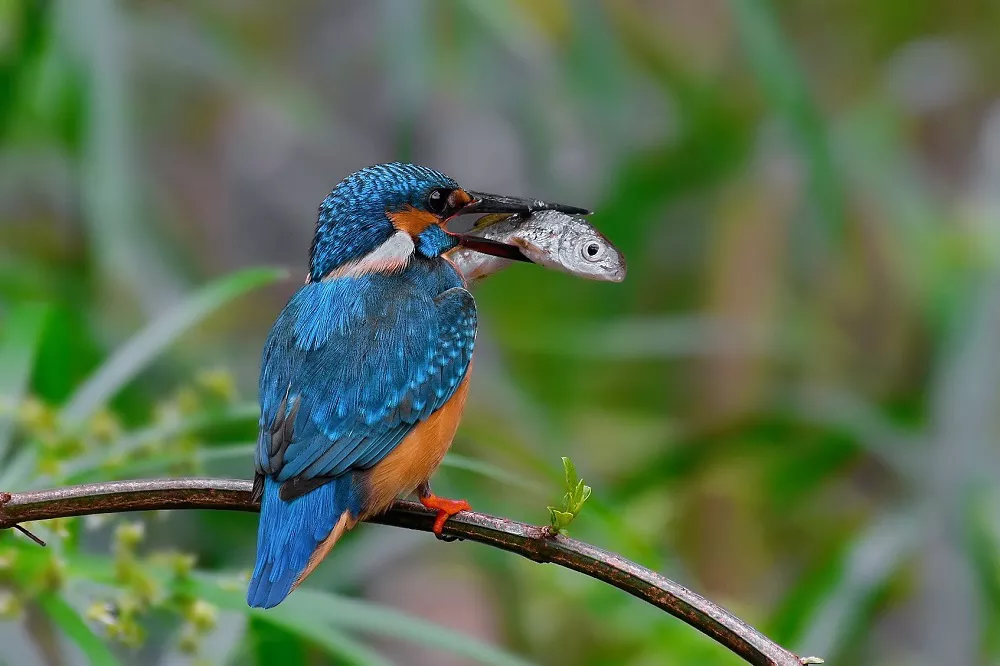Kingfisher birds are one of the most fascinating and colorful species of birds in the world. These stunning birds inhabit various regions across the globe, from tropical forests to temperate woodlands, and even suburban areas. In this article, we delve into the habitats where kingfisher birds make their homes, highlighting their preferred surroundings and the ecological significance of these habitats.
Habitat Diversity:
Kingfisher birds are known for their adaptability and can thrive in a wide range of habitats worldwide, including Asia, Africa, Europe, Australia, and South America. They prefer freshwater habitats such as rivers, streams, lakes, ponds, and marshes with clear water, which is essential for spotting prey. Kingfishers are also attracted to coastal areas and mangrove swamps, where they can hunt for small fish, crabs, and shrimp.
Freshwater Environments:
Kingfisher birds are strongly associated with freshwater ecosystems, as their diet primarily consists of fish. They are commonly found near rivers, streams, lakes, ponds, and even man-made reservoirs. These habitats provide a steady source of food in the form of fish, which are abundant in these water bodies. Kingfishers perch on branches, rocks, or other elevated structures near the water’s edge, using these vantage points to spot their prey and dive in with remarkable precision to catch fish.
Wetlands and Marshes:
Wetlands and marshes are another favored habitat for kingfisher birds. These diverse ecosystems, characterized by shallow water, emergent vegetation, and a plethora of aquatic life, offer ideal conditions for these avian hunters. Kingfishers are attracted to the abundance of prey, including fish, amphibians, crustaceans, and insects, which thrive in these wetland environments. They utilize the surrounding vegetation or perches protruding from the water to survey their surroundings and launch their hunting forays.
Coastal and Estuarine Areas:
Certain species of kingfisher birds, such as the Belted Kingfisher, are also found in coastal and estuarine habitats. These birds adapt to brackish or saltwater environments and are observed along coastlines, estuaries, tidal zones, and mangrove forests. Coastal areas offer a different range of prey options, including fish that thrive in marine or estuarine environments. Kingfishers utilize rocks, piers, and other structures near the water’s edge as perching spots to scan for potential prey.
Tropical Rainforests:
In tropical regions, kingfisher birds inhabit lush rainforests that are interspersed with rivers, streams, and waterways. These birds add a vibrant touch to the canopy with their colorful plumage. Kingfishers in rainforests feed on a variety of prey, including fish, frogs, insects, and small reptiles. They are often found perched on branches near water or hovering above the forest floor, searching for food.
Mangrove Forests:
Mangrove forests are unique coastal habitats characterized by the presence of salt-tolerant trees and intricate root systems that provide shelter for various marine and avian species. Some kingfisher species, such as the Collared Kingfisher, are known to inhabit mangrove forests. These birds take advantage of the diverse prey found in the surrounding mangrove ecosystem, including fish, crabs, and other invertebrates.
Geographical Distribution:
Kingfisher birds can be found on every continent except Antarctica, demonstrating their adaptability to a wide range of environments. They are most diverse in tropical and subtropical regions, where a multitude of species thrive. From the vibrant kingfishers of Asia and Australia to the Belted Kingfishers of North America, each region boasts its own unique set of species that have adapted to specific habitats.
Conservation Significance:
Understanding the habitat preferences of kingfisher birds is crucial for their conservation. Protecting and preserving their preferred habitats, such as freshwater ecosystems, wetlands, coastal areas, and mangrove forests, is essential to ensure their continued presence and the preservation of the delicate ecological balance in these habitats. Conservation efforts aimed at safeguarding water quality, habitat integrity, and prey availability can go a long way in maintaining healthy populations of kingfisher birds.
Conclusion:
Kingfisher birds are renowned for their striking appearance and remarkable hunting abilities. From freshwater environments to coastal areas, tropical rainforests to mangrove forests, these birds have carved out their niches in diverse habitats around the world. By appreciating and safeguarding the habitats where kingfisher birds live, we contribute to the conservation of these charismatic avian species and the fragile ecosystems they depend upon.


 Facebook
Facebook  Instagram
Instagram  Youtube
Youtube 